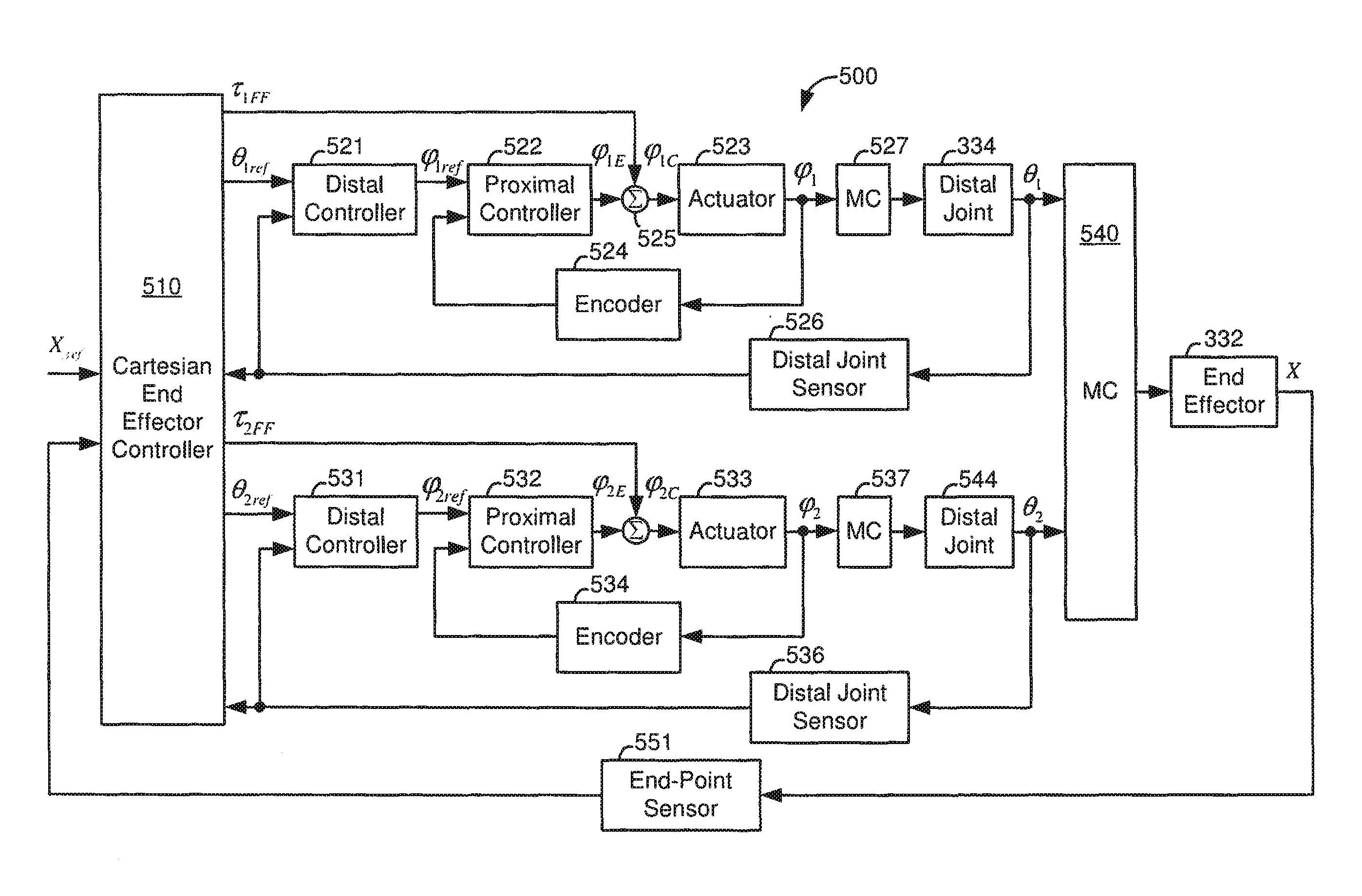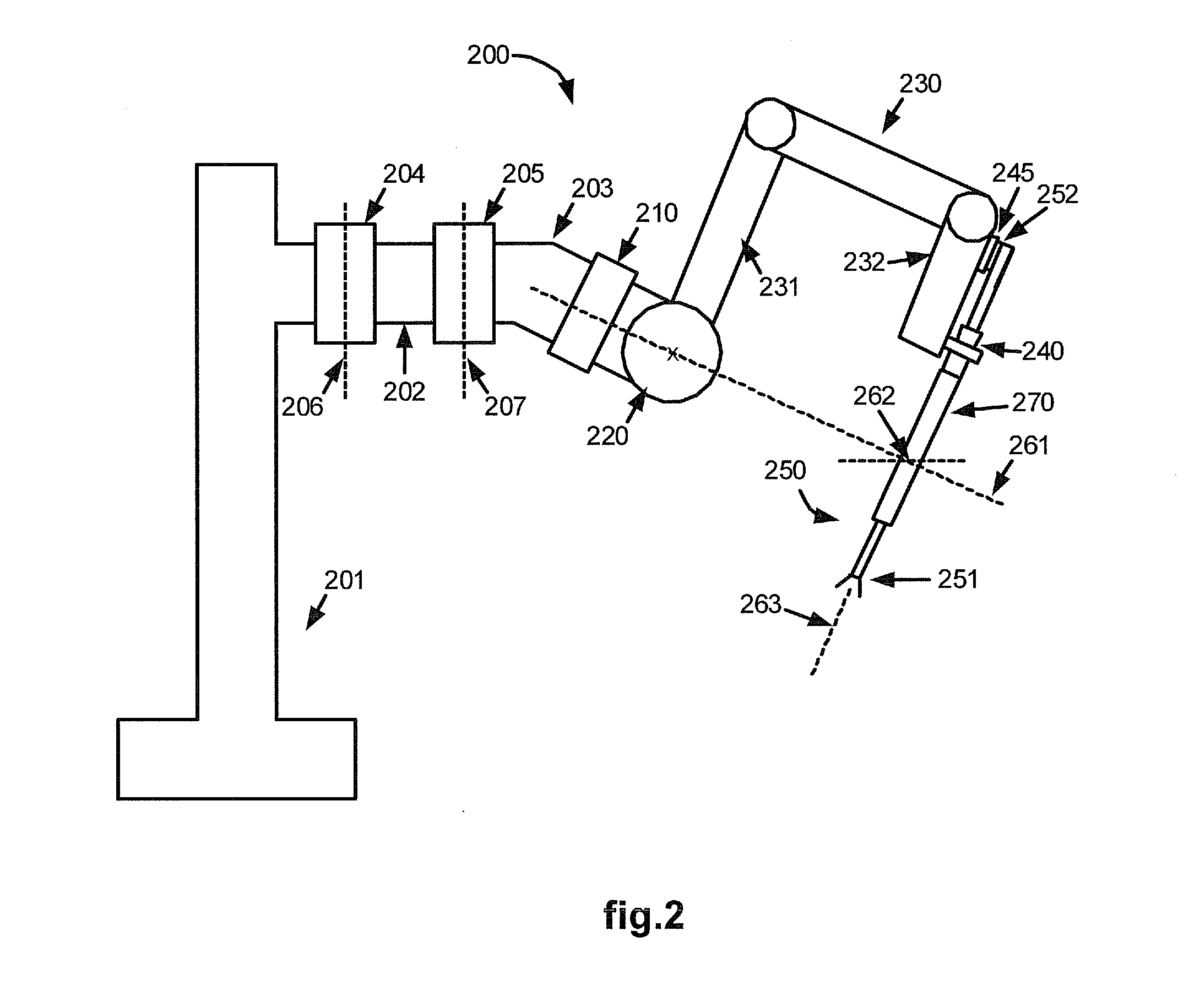Control system configured to compensate for non-ideal actuator-to-joint linkage characteristics in a medical robotic system
a control system and actuator technology, applied in the field of medical robotic systems, can solve the problems of reducing the control capability of a surgeon performing a medical procedure, compliance and friction of the cable transmission, and excessive estimation errors in the end effector position
- Summary
- Abstract
- Description
- Claims
- Application Information
AI Technical Summary
Benefits of technology
Problems solved by technology
Method used
Image
Examples
Embodiment Construction
[0023]FIG. 1 illustrates, as an example, a top view of an operating room employing a medical robotic system. The medical robotic system in this case is a minimally invasive robotic surgical system 100 utilized by a Surgeon 20 while performing a medical procedure, such as a diagnostic or surgical procedure, with assistance from one or more Assistants 30, on a Patient 40 who is lying down on an operating table 50.
[0024]In this system, each medical device is shown to have its own associated robotic arm assembly for holding and manipulating the medical device (such as shown in FIG. 2), and its own associated incision for entry into the Patient 40 for performing the medical procedure. In particular, each of the surgical tools 138, 139, as well as an image capturing device such as a stereoscopic endoscope 140, is conventionally inserted through a tool guide, trocar or cannula into the Patient 40 so as to extend down to the surgical site through its corresponding minimally invasive incisio...
PUM
 Login to View More
Login to View More Abstract
Description
Claims
Application Information
 Login to View More
Login to View More - R&D
- Intellectual Property
- Life Sciences
- Materials
- Tech Scout
- Unparalleled Data Quality
- Higher Quality Content
- 60% Fewer Hallucinations
Browse by: Latest US Patents, China's latest patents, Technical Efficacy Thesaurus, Application Domain, Technology Topic, Popular Technical Reports.
© 2025 PatSnap. All rights reserved.Legal|Privacy policy|Modern Slavery Act Transparency Statement|Sitemap|About US| Contact US: help@patsnap.com



